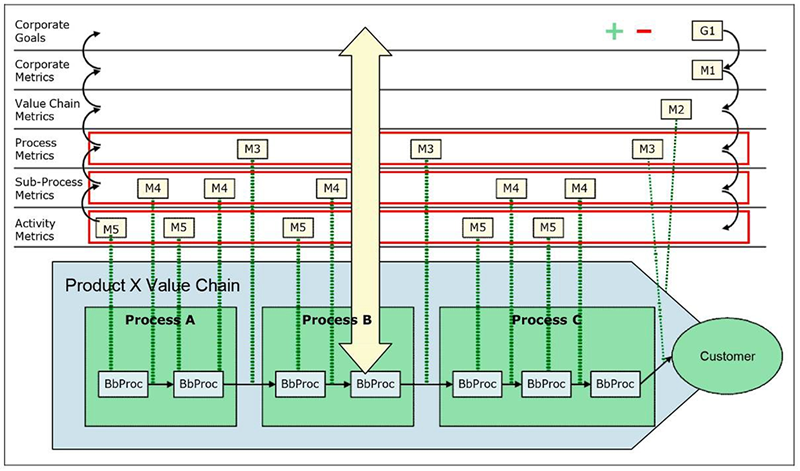Rolling up KPIs from project to program (2)
Viewing this situation from a top-down perspective, you start from the goals and determine what metrics need to be captured from each process in the program to measure whether you meet the goals. Then at the subprocess and activity (task) level, you need to determine what metrics need to be captured to roll up to the process level. After you have up this set, your managers are empowered to see what processes are contributing to or hindering your goals.

The basic premise of this approach is that you start at the top level with your corporate goals (G1). Every company exists to fulfill its corporate goals. The most basic and obvious goal is producing shareholder value, but there are other goals, such as gaining a certain percentage of market share, increasing customer satisfaction, decreasing cost, increasing employee productivity, and so on. Many of the goals change on a yearly basis, depending on performance of the previous year and other market factors. After you set these corporate goals, all the metrics rolling up to those goals should be tailored to indicate success or failure in meeting those goals (represented by the plus and minus signs in the Corporate Goals lane).
As multiple processes within a particular value chain run, you roll all of the metrics up, and because you took a top-down approach, each of them should inform decision makers about where and how processes are helping or hindering corporate goals.
After it is implemented, this approach enables you to adjust at the activity level (M5), which improves some performance metric for an activity, and by doing so, impacts corporate goals (G1). The result is a direct linkage between the tasks that people are doing and the goals of the organization. Key management now has visibility into the processes and clearly understands the impact on the corporate goals within a value chain. Process owners can then make small, incremental changes and see how they are impacting process goals and corporate goals. IBM Business Process Manager gives you the tools to quickly change your processes, and a view of key performance indicators to determine success of failure.
